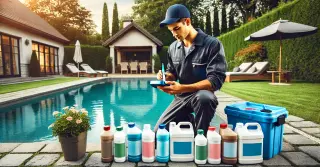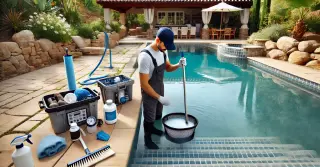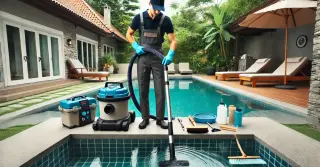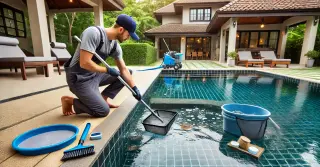Pool Chemical Balance Herrick Center PA

Ensuring the right chemical balance is essential for a safe and enjoyable swimming experience. Proper chemical levels prevent the growth of algae and bacteria, ensure clear water and protect pool surfaces and equipment.
- Optimal pH Balance: The pH balance in your pool is a measure of its acidity or alkalinity. The ideal pH range is between 7.2 and 7.6. Low pH levels result in acidic water, causing skin irritation and equipment corrosion. If the pH is too high, the water becomes alkaline, leading to cloudy water and scaling on the pool surfaces. Consistently testing and adjusting pH levels is crucial for comfort and safety.
- Managing Chlorine Concentration: Chlorine is a key component in pool sanitation, as it kills bacteria, algae, and other harmful microorganisms. The proper chlorine level is between 1-3 ppm. Insufficient chlorine results in unsanitary conditions, promoting bacteria and algae growth. High chlorine levels result in skin and eye irritation and create a strong chlorine smell. Frequently checking and balancing chlorine levels ensures effective sanitation and swimmer comfort.
Managing Total AlkalinityTotal alkalinity is another critical aspect of pool water chemistry. Alkalinity buffers pH levels, avoiding sudden pH changes. The ideal range for total alkalinity is between 80-120 ppm.
- Avoiding pH Fluctuations: Correct alkalinity levels ensure stable pH, preventing rapid pH changes that irritate skin and damage surfaces. If alkalinity is too low, pH levels can fluctuate wildly, making consistent balance difficult. High alkalinity causes cloudy water and scaling. Regularly testing and adjusting alkalinity levels is crucial for stable and balanced water.
- Managing Calcium Hardness: Calcium hardness measures the dissolved calcium in water. The ideal range for calcium hardness is between 200-400 ppm. Insufficient calcium causes corrosive water, damaging surfaces and equipment. If calcium levels are too high, it can cause scaling on pool surfaces and cloud the water. Frequent calcium hardness testing and adjustments is essential for pool protection and clear water.
Proper Chemical Use and StorageProper handling and storage of pool chemicals is essential for both safety and effectiveness. Store chemicals in a cool, dry place, away from direct sunlight and out of reach of children and pets. Adhere to manufacturer guidelines for dosing and application.
- Measuring and Mixing Chemicals: Precise measurement of pool chemicals is vital for correct balance. Using too much or too little can disturb chemical balance and water quality. Always use a clean, dry measuring tool and avoid mixing chemicals directly. Mix in water as needed, following guidelines carefully.
- Understanding Chemical Reactions: Some chemicals can react dangerously when combined. For instance, never mix chlorine and acid. Knowing these interactions avoids accidents and ensures safe use. Store chemicals separately and handle each with care to avoid harmful reactions.
Maintaining the proper chemical balance in your pool is essential for a safe, clean, and enjoyable swimming environment. By frequently testing and balancing pH, chlorine, alkalinity, and calcium, you ensure optimal water quality.
Safe use and storage of pool chemicals improve the safety and longevity of your pool.




